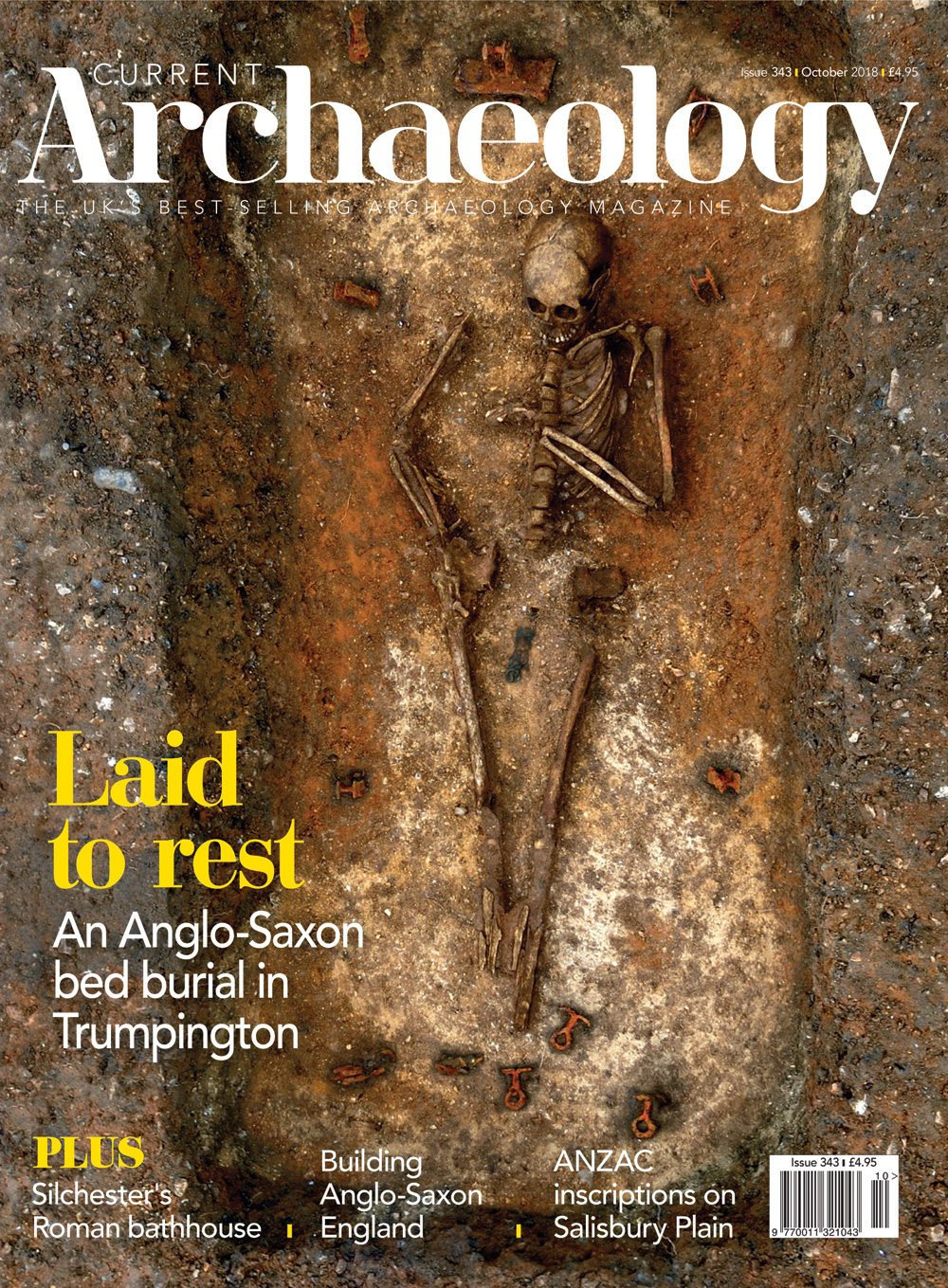As I write, with a mid-August downpour hammering on the roof, this summer’s sweltering heatwave already feels a lifetime ago. During those drier times, though, the parched ground yielded a wealth of archaeological secrets as the ghostly outlines of buried features became strikingly clear. Hundreds of monuments, settlements, and other sites have been captured in aerial photos across Britain and Ireland – we have put together a round-up of some of the highlights.
Long-hidden secrets have also come to light at Trumpington, Cambridgeshire, where excavations have uncovered evidence of a community dating back 1,400 years, as well as a cluster of unusual Anglo-Saxon graves. One of these held the skeleton of a young woman lying on a wooden bed and accompanied by ornate gold-and-garnet jewellery. Still in her teens at time of death, why had this individual been accorded such a lavish burial?
From elaborate funerary rites to the elegant haunts of the living, we also visit Silchester in Hampshire, where the Roman public baths have been re-excavated over a century after their antiquarian investigation. Sophisticated architecture is also the subject of our feature examining Anglo-Saxon buildings and arguing against stereotypes of these structures as a poor shadow of Romano-British achievements.
Meanwhile, two timber structures at Doon Hill, East Lothian, have long been thought of as early medieval – but new archival research suggests their origins could be millennia earlier. Historical records also proved invaluable to a recent survey of graffiti left by ANZAC troops stationed on Salisbury Plain during the First World War: painstaking detective work has linked inscribed names to actual individuals.
Carly Hilts
/n
IN THIS ISSUE:/n
FEATURES/n
SLEEPING BY THE RIVERSIDE/n
Trumpington’s Anglo-Saxon bed burial
Lavishly laid to rest on a bed close to the River Cam, the remains of an apparently high-status young woman are shedding light on a small, but seemingly important, Anglo-Saxon settlement.
REVISITING THE ROMANS/n
Exploring the Silchester bathhouse
The Roman public baths at Silchester were last investigated over 100 years ago. Now, modern excavations are revealing a wealth of new information about the structures.
EPHEMERAL ELEGANCE?/n
Rediscovering the sophisticated architecture of Anglo-Saxon England
Anglo-Saxon architecture is sometimes stereotypedas primitive or lacklustre compared to Romano-British buildings, but new research argues that early medieval construction techniques deserve much greater recognition.
NOT ANGLES BUT FIRST FARMERS/n
Revisiting Doon Hill’s timber halls
In 1980, Andrew Selkirk hypothesised that a pair of timber halls excavated in East Lothian were not early medieval in date, as had been assumed, but Neolithic. Recent research suggests he may have been right.
ANZAC INSCRIPTIONS/n
Investigating Figheldean’s First World War graffiti
Stationed on Salisbury Plain during the First World War, ANZAC soldiers were particularly taken with the small Wiltshire village of Figheldean – and many left their mark behind. Here, we explore their graffiti and the stories that these inscriptions tell.
HOT OFF THE PRESS/n
How this summer’s heatwave revealed a host of historic sites
The unusually hot and dry conditions across Britain and Ireland this summer parched the earth, revealing the outlines of archaeological features lying beneath. We explore some of these newly recorded sites.
NEWS/n
Megalithic discoveries in County Meath; Did the people of Stonehenge come from Wales?; Medieval game time in Aberdeenshire; Neolithic hearth found in Jersey?; Orkney’s oldest bowl unearthed?; Science notes; Raising a (Pictish) hand at the Knowe of Swandro; Finds tray
REGULARS/n
Comment
Joe Flatman excavates theCAarchive
Context
Between the tides, Tankerton, Kent
Reviews
The Quest for the Irish Celt: the Harvard Archaeological Mission to Ireland; Axe-heads and Identity: an investigation into the roles of imported axe-heads in identity formation in Neolithic Britain; Kingdom, Civitas, and County: the evolution of territorial identity in the English landscape; Who We Are and How We Got Here; Late Iron Age and Roman Settlement at Bozeat Quarry, Northamptonshire: excavations 1995-2016; 50 Finds from Worcestershire
Scottish Archaeology Month
A selection of heritage-themed events taking place during Scotland’s month-long celebration of archaeology this September
Exhibition
Bodies of Evidence: how science unearthed Durham’s dark secretat Durham University’s Palace Green Library
Sherds
Chris Catling’s irreverent take onheritage issues
Odd Socs
The Engine Shed Society

